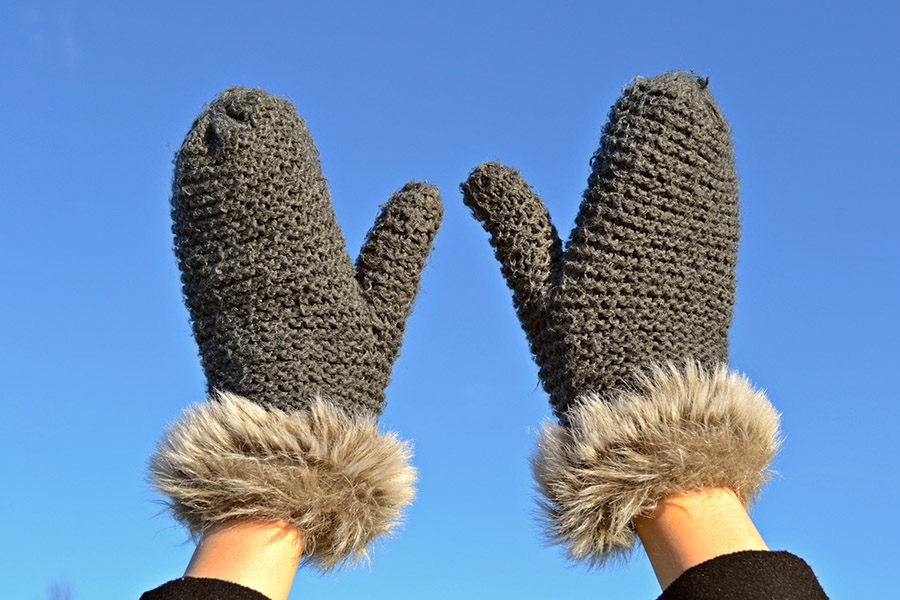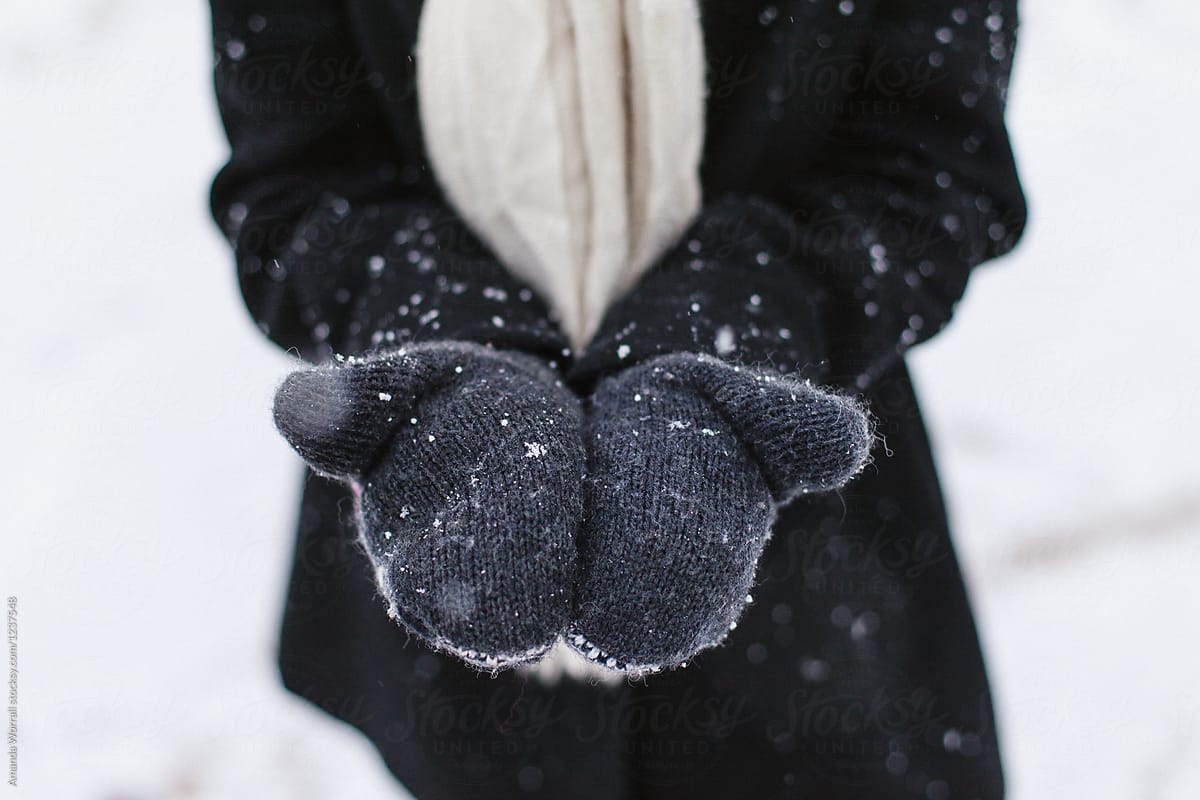Introduction
Why Are Mittens Warmer Than Gloves: Mittens vs. gloves – it’s a timeless debate that has left many chilly-handed individuals pondering which handwear is truly superior in the battle against winter’s icy grip. While both mittens and gloves serve the primary function of keeping our hands warm, mittens have long held the reputation as the cozier choice. But why exactly are mittens warmer than gloves? To unravel this age-old question, we must delve into the intricate science of heat retention and understand the fundamental differences between these two cold-weather accessories.
The key to mittens’ superior warmth lies in their unique design. Unlike gloves, which separate each finger, mittens encase all four fingers together in a single compartment, while the thumb gets its own separate space. This consolidated finger arrangement minimizes the surface area exposed to the frigid air, reducing heat loss. In essence, mittens allow your fingers to huddle together, sharing their warmth and creating a microclimate of coziness within.
Furthermore, the insulation in mittens is typically thicker and loftier compared to that found in gloves. The increased insulation provides a greater barrier against the cold, ensuring that your hands remain toasty even in the most bitter of winter conditions.
In this exploration of mittens’ superior warmth, we will dive deeper into the science behind heat conservation, analyze the practical advantages of mittens over gloves, and explore the situations where gloves may still shine. So, if you’ve ever wondered why mittens are the go-to choice for extreme cold, read on to unravel the mystery and discover the secrets to keeping your hands warm and comfortable during the frostiest of seasons.

Why are mittens warmer than gloves?
Mittens are warmer than gloves (made with the same materials) because, unlike with gloves, your fingers can share warmth. Mittens also have less total surface area for body heat to escape.
Mittens are warmer than gloves primarily due to their unique design and insulation properties. Unlike gloves, which separate each finger, mittens encase all four fingers together in a single compartment, with the thumb in its own separate space. This design minimizes the surface area exposed to cold air, reducing heat loss. When your fingers are close together, they create a microclimate of warmth within the mitten, where they can share their heat, helping to keep each other warm.
Mittens often have thicker and loftier insulation compared to gloves. This thicker insulation provides a more effective barrier against the cold, preventing heat from escaping and cold air from penetrating. The combination of the design that allows for efficient heat exchange among fingers and the superior insulation makes mittens the go-to choice for extreme cold weather. While gloves certainly have their place, especially in situations requiring dexterity, mittens undeniably excel in providing maximum warmth and comfort when facing frigid temperatures.
What is the difference between mittens and gloves?
Differences between a glove and a mitten
A glove is a garment covering hand and has separate sheaths for each finger. A mitten is the type of glove that has only two separate sections – one for the thumb and one for other four fingers.
The primary difference between mittens and gloves lies in their design and how they cover the hands. Mittens are hand coverings that have a single compartment for all four fingers to be enclosed together, while the thumb has its separate compartment. This design allows the fingers to share their warmth, creating a collective heat source within the mitten. It’s akin to your fingers huddling together for warmth, which makes mittens exceptionally warm in cold weather.
On the other hand, gloves have separate compartments for each finger and the thumb. This individual finger separation provides greater dexterity and allows for more precise movements, making gloves the preferred choice in situations where you need to use your fingers for tasks like typing, texting, or gripping objects.
Mittens are warmer due to their finger-sharing design, while gloves offer better finger dexterity and are suitable for activities requiring fine motor skills. The choice between mittens and gloves depends on the specific needs and weather conditions you’ll be facing.
What are better mittens or gloves?
If you’re doing activities that require optimum dexterity and grip, then gloves are your best option. But if dexterity is not that important, then mittens offer more temperature versatility. Personally, I use both. Mittens when it’s cold, and gloves when it’s warmer.
The choice between mittens and gloves depends on your specific needs and the circumstances you’ll encounter. Mittens are generally better at keeping your hands warm in extremely cold weather because they allow your fingers to share their warmth, creating a collective heat source within the mitten. They are ideal for situations where staying warm is the top priority, such as in sub-zero temperatures or during activities where you won’t need fine motor skills.
Gloves, on the other hand, offer better finger dexterity and are more versatile for activities requiring precise movements. They are a better choice when you need to use your fingers for tasks like typing, texting, or handling small objects. Additionally, gloves can provide adequate warmth in moderately cold conditions, especially if they are insulated.
Ultimately, the decision between mittens and gloves should be based on your specific activity and the temperature you’ll be facing. Some people even choose to have both on hand, using mittens for extreme cold and gloves for tasks that require finger agility.
What are mittens gloves used for?
A mitten is a cold-weather piece of clothing that you wear on your hand. Unlike gloves, which cover each finger individually, mittens cover your four fingers together, and your thumb separately. Mittens keep your hands warmer than gloves, because your fingers share their warmth and expose less surface area to the cold.
Mittens and gloves serve distinct purposes and are chosen based on the specific activities and weather conditions individuals will encounter. Mittens are primarily used for activities in cold environments where the priority is to keep hands warm. The design of mittens, with all fingers enclosed in a single compartment (except the thumb), allows them to share warmth, creating a microclimate that effectively retains heat. This makes mittens ideal for activities such as winter sports, snow shoveling, or simply staying warm in extremely cold weather.
Gloves, on the other hand, are designed for tasks that require dexterity and precise finger movements. They are commonly used for activities like driving, typing on keyboards, texting on smartphones, handling tools, and other tasks where the use of individual fingers is essential. While gloves provide some insulation, they may not be as effective at keeping hands warm in the coldest conditions compared to mittens.
Mittens are used when warmth is the top priority, and gloves are chosen for activities demanding finger flexibility and skill. Many people have both in their winter wardrobe to adapt to varying needs and weather conditions.

How does the design of mittens contribute to their superior warmth compared to gloves?
The design of mittens contributes significantly to their superior warmth compared to gloves. Mittens encase all four fingers together within a single compartment, while the thumb has its separate space. This consolidated finger arrangement minimizes the surface area exposed to cold air, which in turn reduces heat loss. Essentially, when your fingers are nestled close together, they create a microclimate of warmth within the mitten. This allows them to share their body heat, effectively keeping each other warm.
In contrast, gloves separate each finger into individual compartments. While this design provides more dexterity and is suitable for tasks requiring fine motor skills, it also means that each finger is exposed to the cold air individually. Consequently, gloves are less effective at preventing heat loss from the fingers, making them generally less warm than mittens.
So, the key advantage of mittens is their ability to facilitate efficient heat exchange among the fingers, creating a collective source of warmth that makes them exceptionally warm and cozy in cold weather conditions.
What role does insulation play in making mittens warmer than gloves?
Insulation plays a pivotal role in making mittens warmer than gloves. The insulation in mittens is typically thicker and loftier compared to that found in gloves. This increased thickness provides a more substantial barrier against the cold, effectively preventing heat from escaping and cold air from penetrating.
The insulation material itself is designed to trap and retain heat, creating a warm and cozy environment for the hands. When combined with the mitten’s unique design that allows the fingers to share their warmth, this thicker insulation enhances the overall warmth of mittens. It acts like a fluffy blanket for the hands, preserving the heat generated by the body.
In contrast, gloves often have thinner insulation, as they need to balance warmth with the need for dexterity. Thicker insulation in gloves could compromise finger movement and tactile sensitivity, which is not as much of a concern in mittens.
So, the superior insulation found in mittens, coupled with their finger-sharing design, makes them a top choice for those seeking maximum warmth and comfort in cold weather.
In what situations might gloves still be preferred over mittens despite the warmth factor?
Gloves may be preferred over mittens in various situations, despite their potentially lower warmth factor. These include activities where dexterity, fine motor skills, and the ability to use individual fingers are crucial. For example, gloves are often the preferred choice for:
Outdoor Sports: Activities like skiing, snowboarding, or ice climbing require precise control over equipment, making gloves more suitable due to their better finger mobility.
Driving: When operating a vehicle, especially in cold weather, the need for a firm grip on the steering wheel and the ability to use buttons and controls necessitates the use of gloves.
Electronic Device Usage: Touchscreen devices are ubiquitous, and gloves designed with touchscreen-compatible materials on the fingertips allow users to operate smartphones and tablets without exposing their hands to the cold.
Work and Labor: Jobs that involve handling tools, equipment, or machinery often require gloves to protect the hands and allow for the necessary hand movements.
Gloves excel in situations where functionality and finger mobility take precedence over maximum warmth. While mittens are ideal for extreme cold, it’s essential to choose the right handwear based on the specific demands of the activity and weather conditions to strike the right balance between warmth and functionality.
Can you explain the science behind the heat-sharing effect in mittens that keeps hands warmer?
The science behind the heat-sharing effect in mittens, which keeps hands warmer, is rooted in the principles of thermodynamics and the reduction of heat loss through conduction. In mittens, all four fingers are enclosed within a single compartment (except for the thumb, which has its separate space), allowing them to be in close proximity to each other. This arrangement creates a microclimate within the mitten where the fingers can share their body heat, leading to enhanced warmth.
Here’s how it works:
Reduced Surface Area: Mittens reduce the surface area exposed to the cold compared to gloves because all the fingers are packed together. With less surface area exposed to frigid air, there’s less heat loss through conduction, which is the transfer of heat from your warm skin to the colder environment.
Heat Transfer: Heat naturally flows from areas of higher temperature to areas of lower temperature. When your fingers are close together, they essentially form a collective heat source. As they exchange heat within the confined space of the mitten, they help to maintain a higher overall temperature within the handwear.
Mittens capitalize on the collaborative heat-sharing behavior of your fingers, creating a warmer environment inside the mitten. This design, combined with adequate insulation, makes mittens an excellent choice for extreme cold, ensuring that your hands stay cozy even in the harshest winter conditions.

Conclusion
The age-old debate of mittens versus gloves has provided us with valuable insights into the science of warmth retention. Mittens undeniably emerge as the victors in the quest for coziness, thanks to their distinctive design and superior insulation.
The ingenious consolidation of fingers in mittens creates a collective warmth-sharing environment that significantly reduces heat loss. By huddling together, your fingers form a united front against the biting cold, ensuring that each digit benefits from the collective heat generated within the mitten. This efficient heat exchange mechanism is the secret behind mittens’ exceptional warmth.
Furthermore, the thicker and loftier insulation found in mittens acts as a robust barrier, impeding the intrusion of icy air and retaining heat more effectively than gloves. It’s like wrapping your hands in a snug, fluffy blanket that shields them from winter’s chill.
However, it’s important to acknowledge that gloves still have their place, especially in situations where dexterity and precise finger movements are required. In such instances, gloves offer practicality that mittens may lack. But when it comes to sheer warmth, mittens reign supreme.
In the grand winter wardrobe debate, mittens have demonstrated their prowess as the ultimate choice for those seeking maximum warmth and comfort in the bitterest of cold. So, the next time you find yourself braving sub-zero temperatures, reach for your trusty mittens and relish in the cozy warmth they provide, knowing that science and design have conspired to keep your hands snug and happy.


